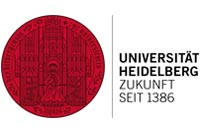Traffic Jam in the Cell: How Are Proteins Assigned to Specific Transporters?

Heidelberg researchers comprehensively identify the composition of transport vesicles for the first time
A fundamental cellular mechanism ensures that proteins are transported to the places they are needed in the cells. So-called vesicles are responsible for that transport. Determining their composition has been difficult up to now, not least because of their short life span.
By combining innovative investigative techniques, biochemists at Heidelberg University have succeeded in analysing two of these transport vesicles – the COPI and COPII vesicles – comprehensively for the first time. The results of the research were published in the journal “Cell Reports”.
About a third of all the proteins that are made in our cells start their lives in the endoplasmic reticulum, that serves as a general protein factory. However, most proteins are needed at other cellular locations and need to be transported there.
To avoid a “traffic jam”, cells have evolved transport vesicles that act as a public transportation system: Passengers – the protein cargo – need to present the correct ticket to board the right bus – a specific type of vesicle – and end up at the correct destination.
Scientists have known for decades that small vesicles that form on the surface of organelles package specific proteins and transport them to other areas of the cell or the cell surface.
“Mutations in genes involved in vesicular transport often lead to disease. It is therefore crucial to understand which proteins are transported by which vesicles. Unfortunately transport vesicles have a short life span and are challenging to purify, so they are difficult to analyse,” states Prof. Dr Felix Wieland, who headed up the research at the Heidelberg University Biochemistry Center (BZH).
The researchers combined two approaches to study the composition of the COPI and COPII vesicles in greater detail for the first time. A vesicle reconstitution procedure made it possible to produce and purify large amounts of vesicles. They also used stable isotope labelling with amino acids in cell cultures. This procedure – called SILAC for short – allows precisely quantifying different protein amounts using mass spectrometry.
“Being able to generate specific types of vesicles and to analyse their protein contents allowed us to define a catalogue of protein cargo for COPI and COPII vesicles. One key finding is that subtypes of COPII vesicles seem to have specialised in transporting certain types of proteins,” stresses Dr Frank Adolf, the study‘s primary author. The researchers now hope that this approach will open the way to better understand how mutations that affect vesicular transport can lead to diseases.
As a member of the Cluster of Excellence CellNetworks at Ruperto Carola, Prof. Wieland’s research at the Heidelberg University Biochemistry Center focuses on the mechanisms of vesicular transport and protein-lipid interactions.
Contact:
Heidelberg University
Communications and Marketing
Press Office, phone +49 6221 54-2311
presse@rektorat.uni-heidelberg.de
Prof. Dr Felix Wieland
Heidelberg University Biochemistry Center (BZH)
Phone +49 6221 54-4150
felix.wieland@bzh.uni-heidelberg.de
F. Adolf, M. Rhiel, B. Hessling, Q. Gao, A. Hellwig, J. Béthune, and F.T. Wieland: Resource Proteomic Profiling of Mammalian COPII and COPI Vesicles. Cell Reports 26, 250–265 (2 January 2019), https://doi.org/10.1016/j.celrep.2018.12.041
Media Contact
All latest news from the category: Life Sciences and Chemistry
Articles and reports from the Life Sciences and chemistry area deal with applied and basic research into modern biology, chemistry and human medicine.
Valuable information can be found on a range of life sciences fields including bacteriology, biochemistry, bionics, bioinformatics, biophysics, biotechnology, genetics, geobotany, human biology, marine biology, microbiology, molecular biology, cellular biology, zoology, bioinorganic chemistry, microchemistry and environmental chemistry.
Newest articles

Machine learning algorithm reveals long-theorized glass phase in crystal
Scientists have found evidence of an elusive, glassy phase of matter that emerges when a crystal’s perfect internal pattern is disrupted. X-ray technology and machine learning converge to shed light…

Mapping plant functional diversity from space
HKU ecologists revolutionize ecosystem monitoring with novel field-satellite integration. An international team of researchers, led by Professor Jin WU from the School of Biological Sciences at The University of Hong…

Inverters with constant full load capability
…enable an increase in the performance of electric drives. Overheating components significantly limit the performance of drivetrains in electric vehicles. Inverters in particular are subject to a high thermal load,…





















